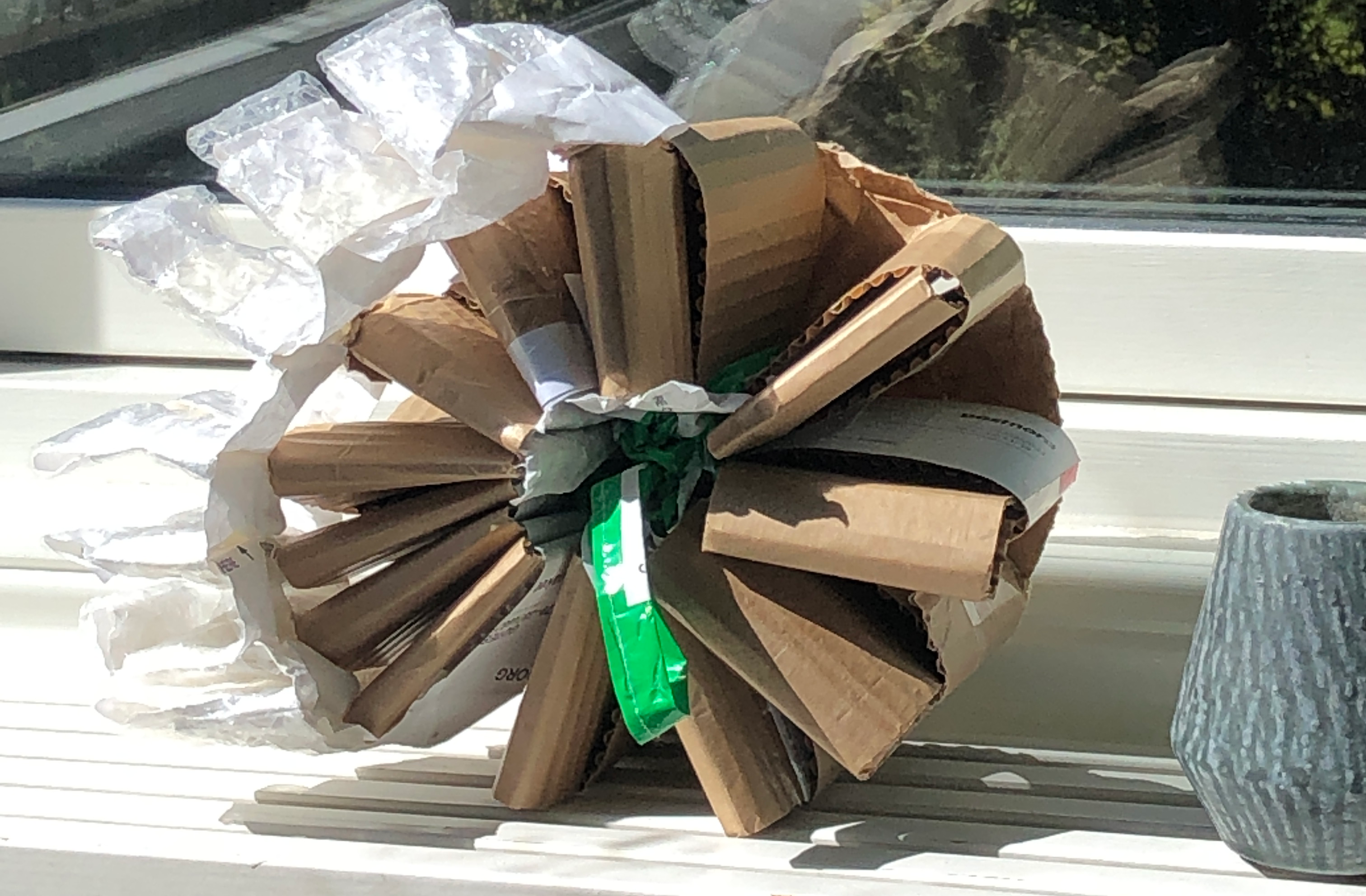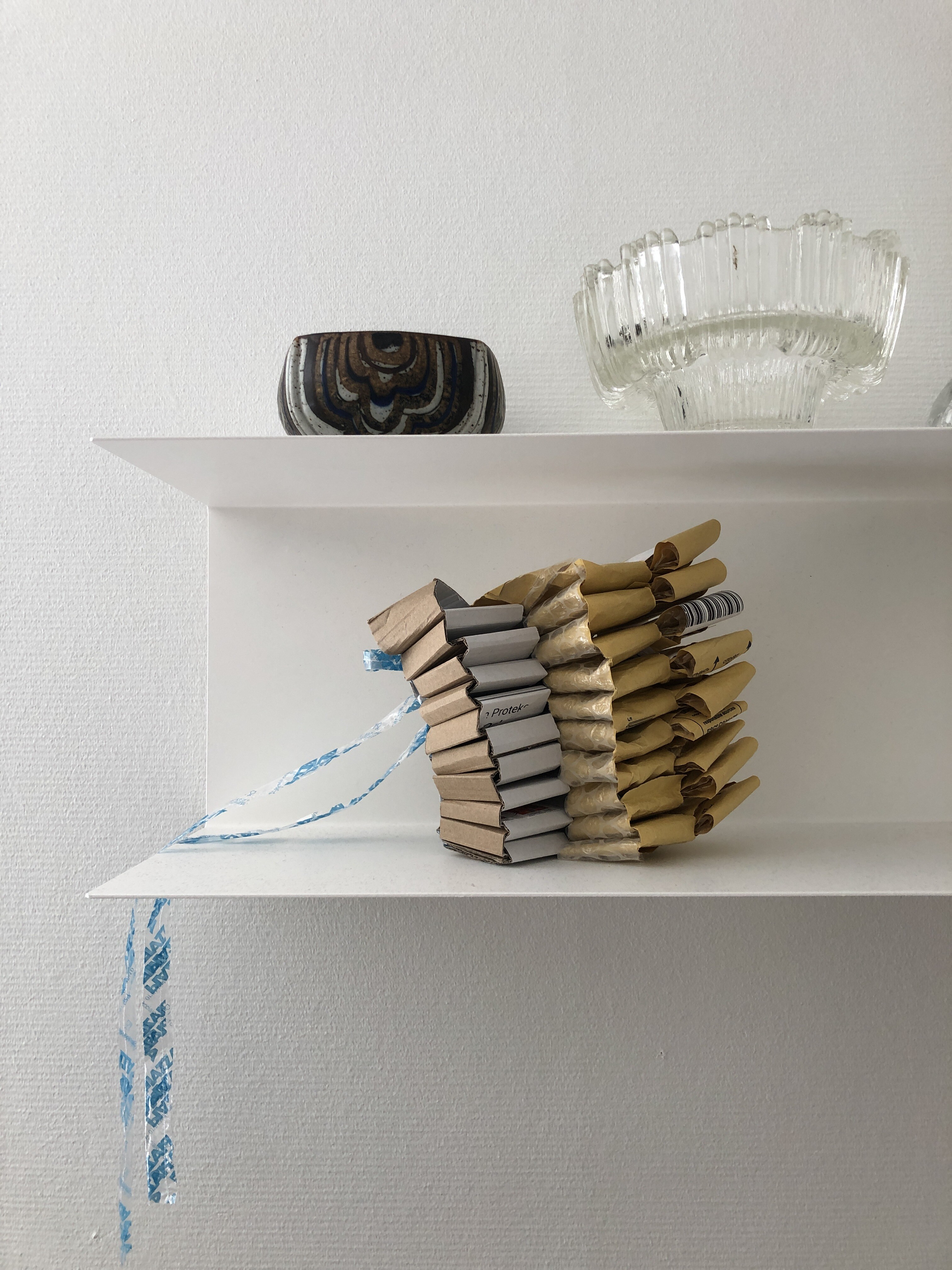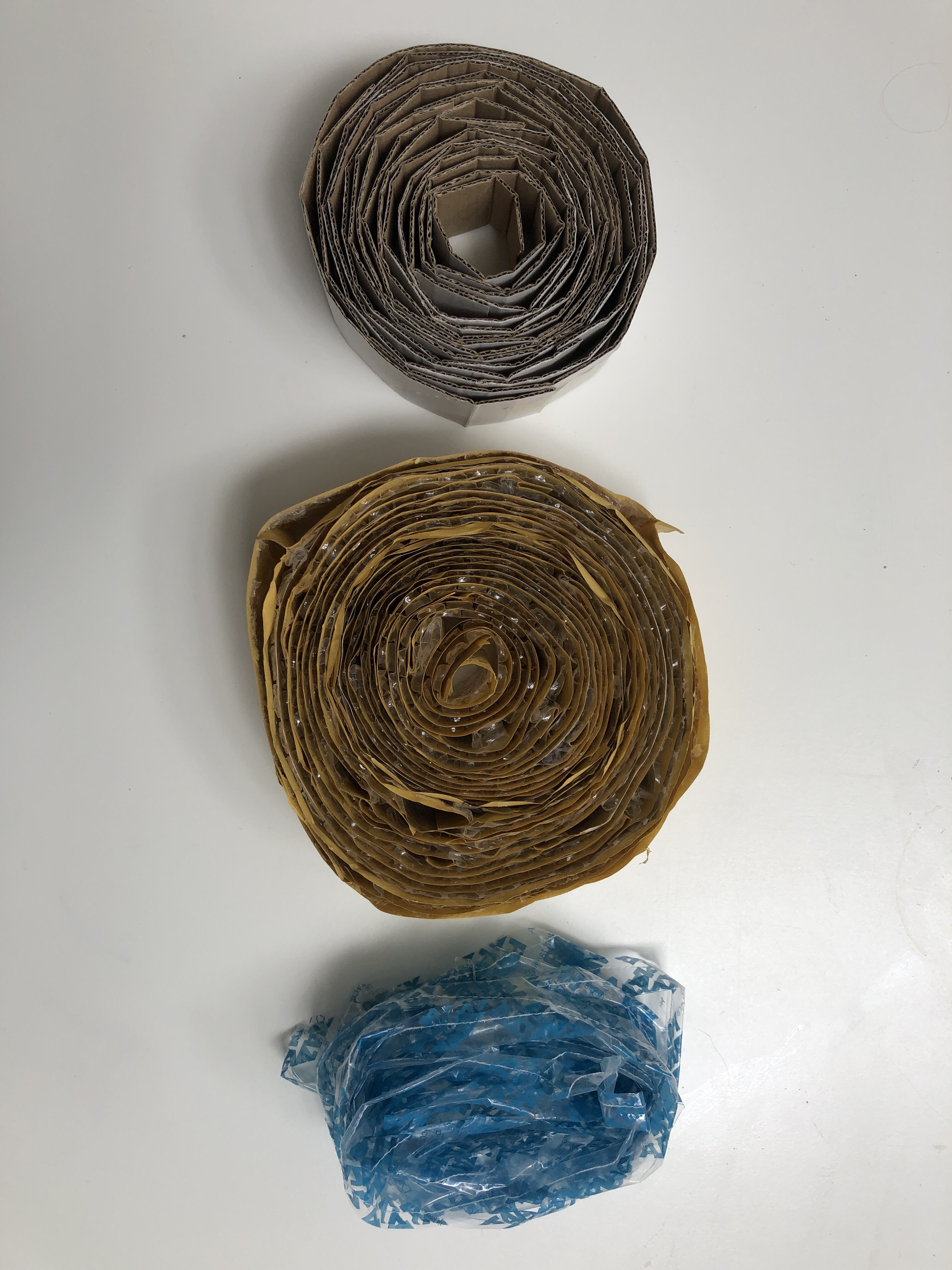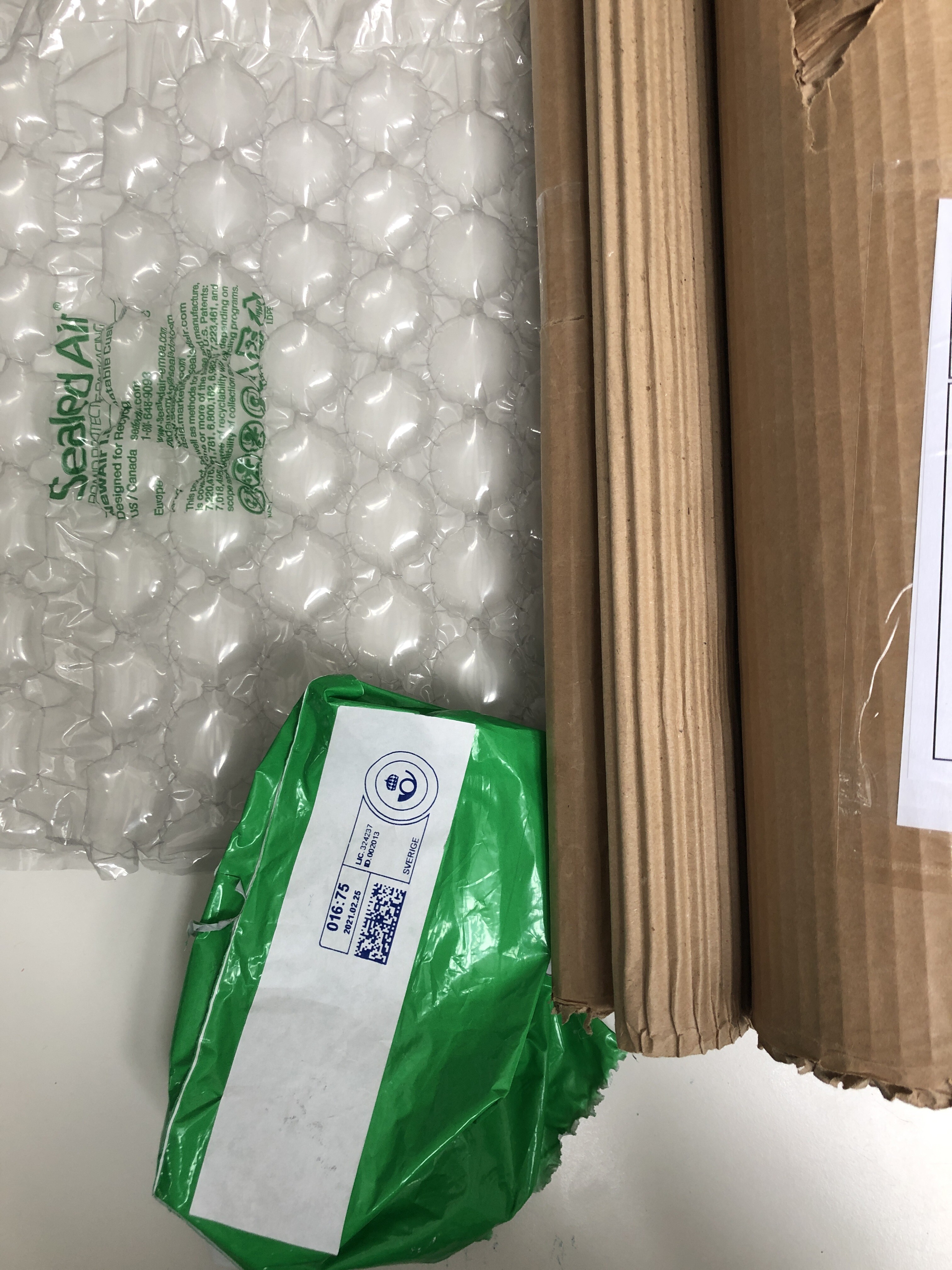
- Knitting Principles
- The Swedish School of Textiles student projects

Knitting Principles creates form and investigates how packaging waste can be used as construction material to create DIY forms through the knitting technique and the different material properties. The work aims to incorporate knowledge sharing and democratic design, by filming the making process of the collection and by making it an open source for others to be inspired by in their up-cycling projects. Also, it adds another topic to the knit community on social media.
Waste of cardboard paper and plastic.
Pernille Madsen, The Swedish School of Textiles.
It is important to value and see the beauty in all kinds of materials, for example how we can use waste material from our daily life by looking at packaging waste as an untapped resource to create something new. Both the democratic design and the DIY community aspect in this project are about material and knowledge sharing.








All group objects:
Each decision during product development affects sustainability and circularity. To develop products with lower environmental impact, the design team needs to be well aware of each component and process, and their individual and combined effect on the final product and its longevity.
One challenge is having comprehensive knowledge regarding sutainability when it comes to all of the components and processes that are a part of the production and lifetime of the garment. An additional challenge is implementing alternative design methods that do not require virgin components. Ongoing research inspires and shows methods to re-make existing products to have new functionalities and designs with an upgraded look.
With higher traceability when it comes to materials, components, and processes, there are increased possibilities for more conscious decisions. If communicated well, this gives the consumer a better basis for decisions.